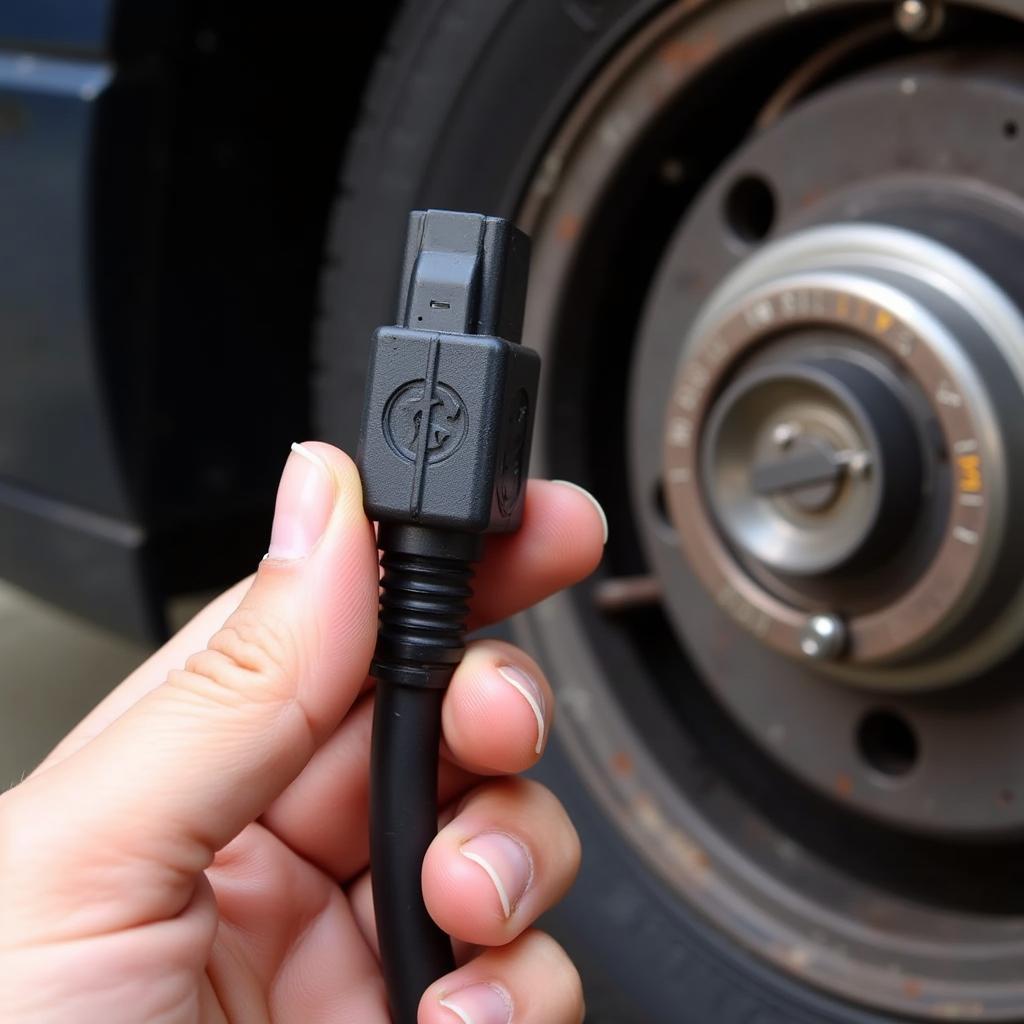The sudden illumination of your car’s ABS and brake system warning lights can be a jarring experience. This often signals a malfunction within these crucial safety systems, demanding immediate attention. Ignoring these warnings puts you and others at risk, potentially leading to brake failure and dangerous driving situations. This comprehensive guide delves into the intricacies of the ABS and brake system warning lights, equipping you with the knowledge to address these issues effectively.
Deciphering the Dashboard Duo: ABS and Brake System Warning Lights
What Triggers the ABS Warning Light?
The ABS or Anti-lock Braking System warning light typically illuminates as a yellow or amber light shaped like a circle with “ABS” inscribed. When this light comes on, it indicates a potential issue within the ABS system, which prevents your wheels from locking up during hard braking.
Common culprits behind the ABS warning light include:
- Faulty ABS Wheel Speed Sensor: This sensor monitors wheel speed and relays the information to the ABS control module. A malfunctioning sensor can disrupt this process.
- Malfunctioning ABS Module: The ABS module acts as the brain of the system. If it experiences electrical or software problems, it can trigger the warning light.
- Issues with the Hydraulic Control Unit: This unit regulates brake fluid pressure based on input from the ABS module. Problems within this unit can also activate the ABS warning light.
 faulty-abs-wheel-speed-sensor
faulty-abs-wheel-speed-sensor
What Does the Brake System Warning Light Mean?
The brake system warning light, often appearing as a red circle with an exclamation mark or the word “BRAKE,” signals a broader issue within your braking system.
Several factors can illuminate the brake system warning light:
- Low Brake Fluid Level: This is the most common culprit. A leak in the brake lines or worn-out brake pads can lead to low brake fluid levels.
- Worn Brake Pads: Brake pads have wear indicators that emit a high-frequency squealing sound when they are nearing the end of their lifespan. If ignored, this can lead to further damage and trigger the warning light.
- Parking Brake Engaged: In some vehicles, leaving the parking brake partially or fully engaged can trigger the brake system warning light.
 low-brake-fluid-level
low-brake-fluid-level
Why You Should Never Ignore These Warning Lights
While it might be tempting to dismiss these warning lights, especially if your car seems to be braking fine, doing so can have dire consequences. Both the ABS and brake systems are critical for your safety on the road.
Here’s why ignoring these warnings is a dangerous gamble:
- Increased Stopping Distances: A malfunctioning ABS system can lead to longer stopping distances, especially on slippery surfaces, increasing the risk of collisions.
- Loss of Vehicle Control: Without a functioning ABS, your wheels can lock up during hard braking, making it difficult to steer and maintain control of your vehicle.
- Complete Brake Failure: In the most severe cases, ignoring brake system problems can lead to complete brake failure, putting your life and the lives of others at risk.
What to Do When Your Warning Lights Turn On
- Don’t Panic, But Don’t Delay: If your ABS or brake system warning lights illuminate, remain calm but address the issue promptly.
- Assess Your Situation: If you’re in traffic, carefully move to a safe location off the road. If the warning light comes on during driving, pull over as soon as safely possible.
- Check Your Brake Fluid: With the engine off, carefully open the hood and check the brake fluid level in the reservoir. If it’s low, adding brake fluid might temporarily solve the problem, but a mechanic should still inspect the vehicle for leaks or other issues.
- Seek Professional Help: It’s crucial to have a qualified mechanic diagnose the problem. They have the expertise and tools to pinpoint the root cause and perform the necessary repairs.
how to fix brake system warning light
The Role of Remote Diagnostics and Programming
In today’s technologically advanced world, remote diagnostics and programming have emerged as game-changers in the automotive repair industry.
- Remote Diagnostics: This involves connecting your car’s onboard computer to a remote diagnostic tool, allowing technicians to access real-time data and fault codes, often pinpointing the issue without needing to see the car physically.
- Remote Programming: This allows technicians to update or reprogram your car’s software remotely, addressing software-related issues that may be triggering the warning lights.
2014 honda accord abs brake traction steering warning lights issue
Preventing Future Problems: Proactive Brake System Maintenance
Prevention is always better than cure, especially when it comes to your car’s braking system.
Here are some proactive steps to prevent future issues:
- Regular Brake Inspections: Follow the manufacturer’s recommended maintenance schedule for brake inspections.
- Timely Brake Pad Replacements: Don’t wait for the warning lights to come on. Replace your brake pads as soon as they show signs of wear.
- Quality Brake Fluid: Use high-quality brake fluid and have it flushed and replaced according to your car’s maintenance schedule.
 worn-out-brake-pads
worn-out-brake-pads
Conclusion
The ABS and brake system warning lights are your car’s way of signaling potential danger. Ignoring these warnings can jeopardize your safety and the well-being of others on the road. Understanding what triggers these warning lights and taking prompt action is crucial. Remote diagnostics and programming have revolutionized automotive repair, providing efficient solutions for many brake-related issues. However, regular maintenance and timely repairs remain the best defense against brake system failures.
